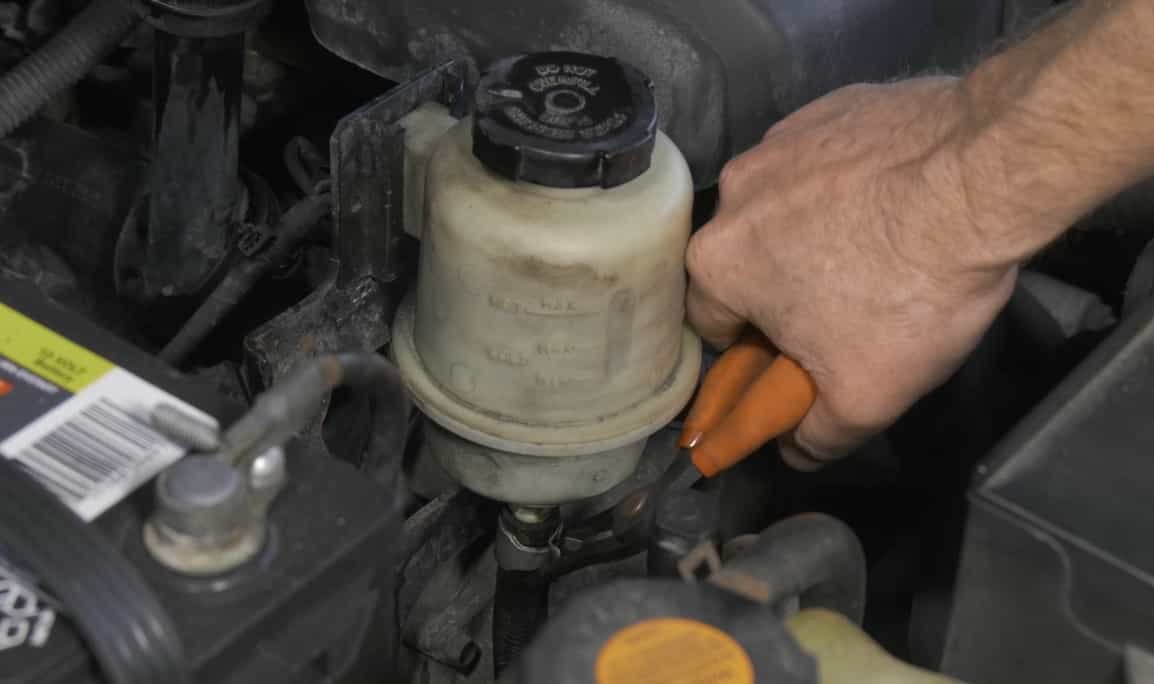Have you noticed a reddish fluid pooling under your Nissan Titan lately? Or maybe your steering wheel feels heavier than usual when making tight turns? These might be early signs of a power steering leak—a common but often underestimated issue in full-size trucks like the Titan. While it may seem like a minor inconvenience at first, ignoring this warning can lead to costly repairs or even dangerous driving conditions.
The Nissan Titan is built for toughness and performance, but like any mechanical system, it’s not immune to wear and tear—especially in its hydraulic power steering components. From aging hoses to failing pumps and seals, a leak in this system can affect your handling, safety, and your wallet. And here’s the kicker: repair costs can vary wildly depending on the cause and how quickly you act.
So, how much does it actually cost to fix a power steering leak in a Nissan Titan? In this article, we break down everything you need to know—from what causes the leak to what you can expect to pay at the repair shop. You’ll also learn smart ways to cut down on repair bills, whether OEM or aftermarket parts are worth it, and when it might be better to replace the entire system instead of patching it up.
Whether you’re a longtime Titan owner or just noticing symptoms for the first time, this guide will help you make informed decisions—before the drip turns into a drain on your finances.
Power Steering System Overview
Before diving into the numbers, it’s important to understand what exactly makes up your Nissan Titan’s power steering system—and why it matters. This system is responsible for giving you that smooth, easy control over your truck’s massive weight, especially when maneuvering at low speeds or during tight turns.
The Titan typically uses a hydraulic power steering system, which relies on pressurized fluid to assist your steering. This fluid flows through a network of components including the power steering pump, high- and low-pressure hoses, a reservoir, and the rack and pinion mechanism that translates your wheel movements to the front tires. When everything is working properly, you hardly notice it’s there. But when something leaks or fails, the change in steering performance is both immediate and alarming.
Leaks can occur anywhere along this hydraulic line. Common culprits include cracked or corroded hoses, worn-out seals in the pump, or damage to the steering gear itself. And because the system is under constant pressure, even a small leak can quickly escalate—leading to a complete loss of power assist or, worse, steering failure while driving.
One key thing to note: unlike some newer vehicles that use electric power steering (EPS), the hydraulic setup in many Titans—especially older models—requires regular maintenance and can be more expensive to repair due to the number of mechanical parts involved.
By understanding how the system works, you’re better equipped to identify early signs of trouble and avoid unnecessary costs. In the next section, we’ll explore exactly what factors influence the price tag of fixing a leak—because knowledge, in this case, really can save you hundreds.
Factors That Affect Repair Costs
When it comes to fixing a power steering leak in your Nissan Titan, there’s no one-size-fits-all price. The cost can vary dramatically depending on several key factors—some of which are out of your control, while others can be managed with smart decisions.
First and foremost, the location of the leak plays a major role. If the issue is as simple as a cracked return hose or a loose clamp, you might get away with a quick fix that costs under $200. But if the leak stems from the power steering pump, steering rack, or gearbox seals, the repair becomes significantly more labor-intensive—and costly.
Model year is another big factor. Older Titans, especially those from the early 2000s, may have harder-to-find parts or suffer from corrosion that complicates the repair process. On the other hand, newer models might use more compact systems that require more disassembly, translating into higher labor costs at the shop.
Then there’s the choice of replacement parts. OEM (Original Equipment Manufacturer) parts generally cost more but offer guaranteed compatibility and quality. Aftermarket options are often cheaper and can work just as well, but they may vary in reliability and fitment—especially for high-pressure components.
Labor rates also vary depending on where you live and whether you go to a dealership or an independent mechanic. Dealerships tend to charge more per hour, but they may be better equipped to diagnose Titan-specific issues.
Finally, the severity of the leak matters. Minor leaks caught early are much cheaper to fix than major ones that have already damaged other components like the serpentine belt or alternator. The longer you wait, the more you’ll pay—not just in cash, but potentially in lost safety and drivability.
Real-World Cost Breakdown
Now that you know what can affect the cost, let’s break down what you’re actually likely to pay to fix a power steering leak on your Nissan Titan. Depending on the source of the leak and where you take your truck for service, repair costs can range from a couple hundred to well over a thousand dollars.
If the issue lies in a damaged hose or loose fitting, you’re looking at a relatively quick and inexpensive fix—typically $150 to $300, including parts and labor. These repairs are common and usually don’t require major disassembly.
On the other hand, if the power steering pump is the problem, you can expect to pay anywhere from $400 to $700. The pump itself might cost around $250, with labor making up the rest of the bill. And if your leak is coming from the rack and pinion system—arguably the most expensive component in the setup—the repair could cost $800 to $1,500, depending on whether you use OEM or aftermarket parts.
Don’t forget about diagnostic fees, which are often charged separately. Most shops will charge $50 to $150 just to pinpoint the issue before any work begins.
Going to a dealership typically means higher labor costs and parts prices, but you’ll likely get OEM parts and a warranty. Independent shops can be more affordable, especially for straightforward jobs, but quality and experience may vary.
In short, the total cost hinges on the complexity of the leak and the path you choose for repair. Getting multiple estimates and acting early can help keep your expenses under control—something every truck owner can appreciate.
If your Nissan Titan is showing signs of a power steering leak, you may also notice other dashboard warnings appearing—like the slip indicator light. In some cases, these warnings are linked, especially when fluid levels or system pressure are affected. To better understand what this warning means and how it could relate to your steering system, check out our in-depth guide on Nissan Titan Slip Light: Possible Causes and Solutions
Ways to Save on Repair Costs
Power steering repairs don’t have to drain your bank account—especially if you approach the problem with a bit of strategy. While you can’t always avoid mechanical issues, there are smart ways to reduce the financial impact when your Nissan Titan starts leaking power steering fluid.
Early detection is your first line of defense. The sooner you notice the signs—like fluid stains, a whining noise when turning, or increased steering effort—the cheaper the fix. A minor leak can often be repaired with a simple hose replacement, but if left unchecked, it can lead to more extensive damage that multiplies the cost.
When it comes time for parts, consider high-quality aftermarket components. OEM parts offer peace of mind, but they often come with a premium price tag. Trusted aftermarket brands can provide comparable durability at a fraction of the cost—just make sure they meet manufacturer specs and have solid customer reviews.
Shopping around for estimates is another money-saving move. Independent repair shops usually charge lower hourly rates than dealerships and may even allow you to supply your own parts. However, always ensure the shop has experience with trucks like the Titan and offers a warranty on their work.
You can also reduce future costs through preventive maintenance. Regularly check your fluid levels, inspect hoses for cracks, and replace steering fluid according to your vehicle’s service schedule. Investing a little time now can save you hundreds down the road.
Ultimately, saving on repairs isn’t just about cutting corners—it’s about being proactive, informed, and strategic with your choices.
When to Replace Instead of Repair?
Sometimes, a patch just won’t cut it. While fixing a single leaking component might seem like the most cost-effective choice, there are cases where replacing the entire power steering system—or major parts of it—is the smarter move in the long run.
One key indicator is frequent leaks or recurring issues. If you’ve already repaired hoses or seals and the system continues to lose fluid, chances are other components are worn out or corroded. In this case, chasing individual leaks becomes a game of whack-a-mole—and the repair bills start stacking up.
Mileage is another factor. If your Titan has over 150,000 miles, the entire steering rack or pump may be nearing the end of its service life. Rather than fixing piecemeal, replacing the whole unit can offer greater reliability and longer-term value—especially if you plan to keep the truck for several more years.
Listen to your truck, too. If you hear grinding, whining, or groaning noises when turning—or feel resistance in the steering wheel—that may indicate internal damage. These symptoms often mean the issue isn’t just fluid loss, but mechanical failure inside the pump or steering gear.
It also comes down to safety. A compromised steering system isn’t something to gamble with. If you’re experiencing severe symptoms or multiple leaks, it’s often safer to replace the entire assembly and restore full control to your Titan.
In the end, knowing when to cut your losses can save you more than just money—it can save your time, your truck, and even your peace of mind on the road.
Conclusion & Call to Action
A power steering leak in your Nissan Titan may start as a minor annoyance, but it can quickly become a major problem—both for your wallet and your safety. Understanding the mechanics behind the system, the factors that influence repair costs, and the smart choices you can make along the way empowers you to take control of the situation before it spirals.
Whether it’s a loose hose, a worn-out pump, or a failing steering rack, identifying the issue early can mean the difference between a $200 fix and a $1,500 overhaul. And knowing when to stop repairing and start replacing? That could save you time, stress, and repeat visits to the mechanic.
Remember, a smooth-turning wheel isn’t just about comfort—it’s about confidence, especially when you’re hauling, towing, or navigating unpredictable terrain in a full-size truck like the Titan. Don’t let a small leak turn into a big liability.

